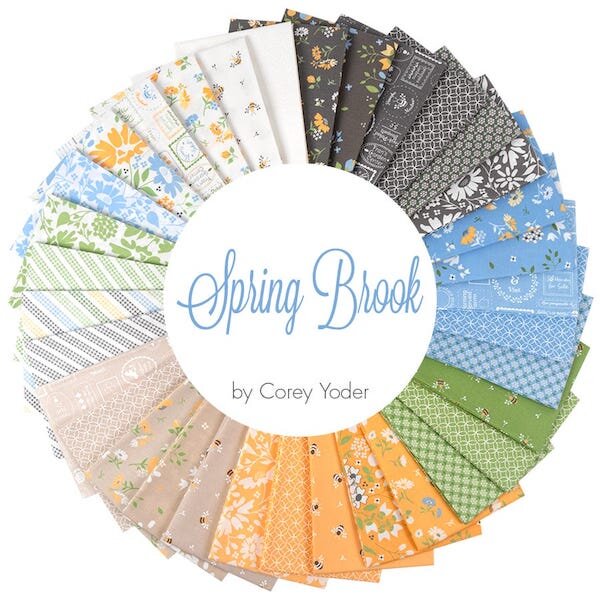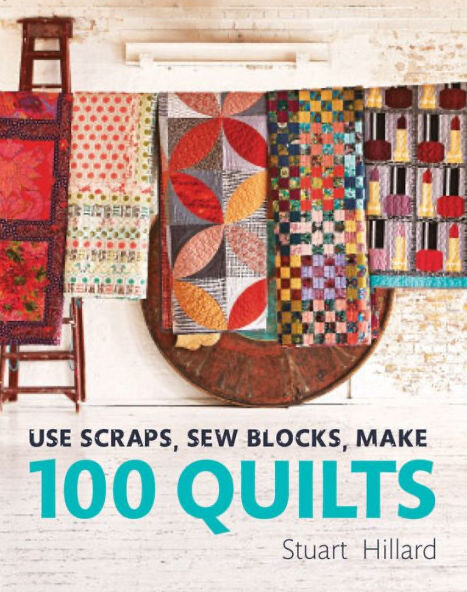Another Quilt Top to Add to the Pile
I finished the green and purple quilt top yesterday morning while I waited for it to warm up enough for me to work outside:
I think I am going to have to take off that outer border and reattach it—despite measuring carefully through the center of the quilt, despite cutting the border on the lengthwise grain of the fabric, and despite using my walking foot to attach it, the border is ruffling. I may have to switch back to piecing on my Necchi. I was using the Janome just because it was set up for piecing and had the right color thread in it. For now, though, the top has been folded carefully and added to the pile. I’ll revisit it in a couple of days.
I also made the mistake of playing with BlockBase+ for a bit and now I’ve got an idea for another quilt. I knew that was going to happen.
I’ve noticed that many of the really productive quilt designers out there—the ones with patterns AND blogs AND YouTube channels AND Instagram feeds, etc.—have enlisted younger-generation family members in their businesses. I should have had more kids, LOL.
****************************************************
I actually had to open the greenhouse doors for a while yesterday as it was so warm inside. I chatted with our renter and his 4 year-old daughter on my way over to the garden, and she informed me that they had caught a wolf spider in the house and relocated it to the greenhouse, and if I saw it, I was to address it as “Olivia.” I thanked them for moving the spider and not killing it. I don’t mind spiders (or snakes) in the greenhouse.
The fruit trees need to be pruned. That was on my list for the afternoon. A couple of the apple trees had to have some lower branches removed. I should have done that last year but didn’t. That’s done now, and when the rest of the snow melts, I can get to the other trees.
It felt good to be out in the sunshine. This nice weather may be a Mother Nature head-fake, though—I’ve lived here long enough to know that we could still get snow in June.
The husband spent the day chasing down a problem on the forklift, which inexplicably has been shutting itself off while it’s running. He uses that machine a lot, so having it operational is a priority.
****************************************************
This little wooden box sums up much of what I’ve been struggling with for the past couple of weeks:
At the beginning of February, we got a freight shipment of stuff from my in-laws’ house in Maryland. It was freighted here because there were some large paintings done by my MIL and by her mother that are going to the girls, but the shipment also included boxes of some other items. My father-in-law moved to assisted living just before Christmas. His daughters spent several weeks in Maryland cleaning out the house. Thankfully, neither of my in-laws were pack rats—not even close—but there were still items that needed to be dealt with.
I’ve been going through the boxes one by one. There are photos. There are slides. There are CDs with backups of all the photos on my MIL’s computer. And there was this little wooden box. I opened it, expecting to find recipes. What I found were index cards with all the names and varieties of all the azaleas that the husband’s grandmother had planted at her house in Pennsylvania.
I said to him, “What do I do with this?” Those of us who spent time at that house remember how beautiful the azaleas were. My MIL had moved some of them to her house in Maryland and no doubt kept this box of cards so she would have the information. We like being able to see Grandma Milly’s handwriting. But none of this really has value beyond the sentimental.
I do not want to leave a mountain—or even a hill—of stuff for my children to deal with after I am gone. Even the sentimental value of some of these items diminishes as we get further from previous generations.
I could figure out creative things to do with these cards. I could scan them. I could frame a couple. But all of that takes time, and doing so is not really a priority for me right now. So I ponder what to do with this box.










































